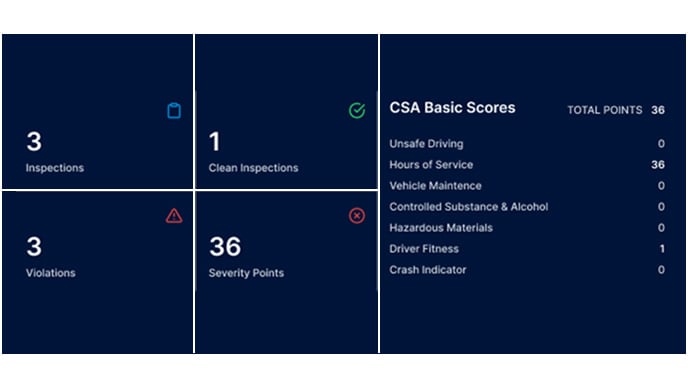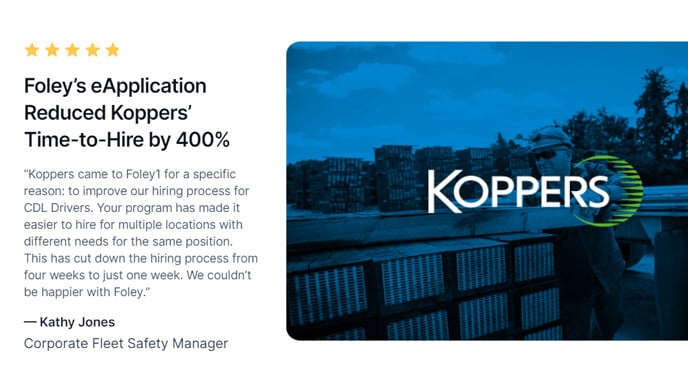All About the DOT Return-to-Duty Process & Recordkeeping Requirements

When a driver fails a DOT drug test, they must complete the return to duty process before resuming their safety-sensitive duties.
We’ve previously covered what to do when you’re faced with different situations involving a non-negative drug test result, but what happens when the employee who produced it is ready to go back to work?
They must first complete what’s known as the return-to-duty and follow-up testing process.
It’s important to note that any failed DOT drug tests, including refusals to test, that your CDL drivers produce will be added to their FMCSA Drug and Alcohol Clearinghouse record. They will remain on their record until the return-to-duty process has been completed and five years from the date the violation was committed has passed.
A NEW regulation regarding the FMCSA Clearinghouse will go into effect next month, and over 235,000 CDL drivers will have to complete the return-to-duty process to avoid losing their commercial driving privileges. You can find out more by watching our on-demand webinar:
Read on to make sure you’re prepared in the event any of your CDL drivers test positive for drugs or alcohol now or in the future, and get the solutions to these common concerns:
- What is the return to duty process?
- How many follow-up DOT drug tests need to be taken?
- Do follow-up tests replace random drug testing?
- What are the return to duty DOT recordkeeping requirements?
- How do I manage the return to duty process and recordkeeping?
What is the Return to Duty process?
The DOT requires the following specific steps to be taken after a CDL driver fails a drug or alcohol test:
- Removal from safety-sensitive functions (like driving) immediately: Even if they’re on the road in another state, the driver must be notified to stop driving as soon as it’s safe to do so.
- Initial evaluation with a DOT-qualified Substance Abuse Professional (SAP): During this face-to-face interview, the SAP will evaluate the employee to understand their situation and usage history. This evaluation allows the SAP to determine what type of activities or treatment the employee must undergo.
- Education and treatment program: The SAP will prescribe a treatment program for the employee based on their initial interview.
- Follow-up evaluation with the SAP: After the employee has completed the SAP’s treatment program, another evaluation must take place with the same SAP. At that time, they will determine whether the employee may take a return to duty test and resume safety-sensitive functions.
- Follow-up test schedule: The SAP will provide the Designated Employer Representative (DER) with a schedule of follow-up tests.
- Return to duty drug test: Once the SAP confirms that the employee has successfully completed all requirements, they will recommend to the DER that the employee may take an RTD test. The collection of the specimen must be directly observed by an individual of the same sex during the entire process to ensure the integrity of the test.
- FMCSA Clearinghouse reporting: Employers must report negative return-to-duty test results to the FMCSA Clearinghouse by the close of the third business day following the date on which the results were received.
- Returning to duty: Once a negative DOT drug test result is received, the employee may resume their safety-sensitive functions, such as driving.
A little more detail on the follow-up tests: once your driver is ready to get behind the wheel once again, their interaction with their designated SAP isn’t over. They must continue with the follow-up testing schedule that’s been assigned to them. Here are the answers to some common questions on follow-up testing.
How many follow-up DOT drug tests need to be taken?
The DOT requires the SAP to schedule a minimum of six tests over a 12-month period, but the process may include more tests and continue for up to five years. Like the return to duty test, each follow-up test must be taken under direct observation.
Do follow-up tests replace random drug testing?
No. Just like all other CDL drivers on your roster, the employee must be included in a regular random testing pool and complete any selections they may receive in addition to their scheduled follow-up tests. A random test cannot replace a follow-up and vice versa, since random drug tests are not taken under direct observation.
Return to Duty DOT Recordkeeping Requirements
In addition to complying with RTD regulations, you must also ensure you’re staying on track with any records associated with the return to duty process. You need to follow these recordkeeping requirements even if one employee needs to complete the RTD and follow-up process:
- Have a written DOT-compliant drug and alcohol testing program in place that includes RTD/follow-up testing procedures for the duration of time it was enforced, plus five years after it has been replaced or revised
Keep the following records for five years:
- Positive alcohol test results indicating an alcohol concentration of 0.02 or greater
- Verified positive drug test results
- Refusals to take required alcohol and/or drug tests (including substituted or adulterated drug test results)
- SAP reports
- All follow-up tests and schedules for follow-up tests
Remember, all DOT drug and alcohol testing records must be kept in a secure location with controlled access. Keep paper files locked in filing cabinets, and password-protect your electronic records. Ensure all records are legible and signatures can be authenticated in the event of an audit.
Automating the Return to Duty DOT Recordkeeping Process
Now that you know all the steps involved in completing and tracking the RTD process, you’re probably wondering how you’re going to do it on your own. The good news? You don’t have to.
A third-party administrator (like Foley) can handle all aspects of your DOT drug and alcohol testing needs, including the RTD and follow-up testing components, as well as FMCSA Clearinghouse compliance.
With our DOT Compliance Platform, Dash, you’ll be able to implement the RTD process for any employee, keep track of their progress, and automatically store all the documentation in their driver file. You won’t have to stress about scheduling the necessary tests or being prepared for a compliance review once it’s all said and done.
If worrying less about DOT drug testing is on your compliance wish list, schedule a FREE software demo with Foley now by clicking here or filling out the form below. Your dedicated Foley account manager can help simplify your DOT compliance needs one return-to-duty test at a time.
Related Articles
How Long Should Employee Onboarding Really Take?
How to Rehire Drivers Quickly After the COVID Crisis
Understanding Your Pre-Employment DOT Drug Testing Requirements
.png)



